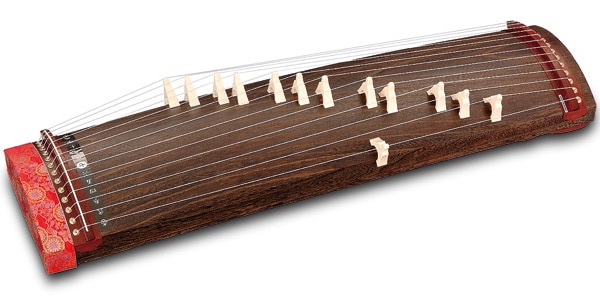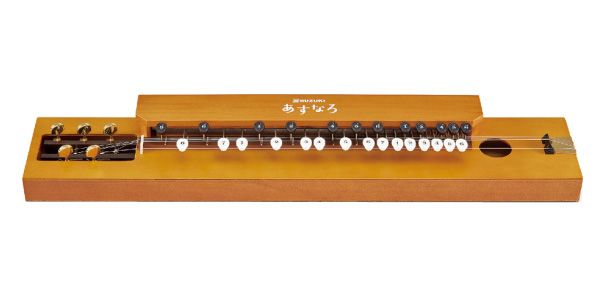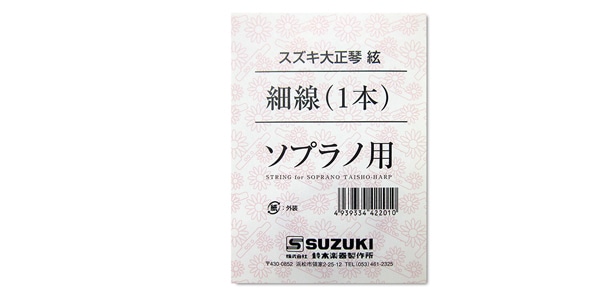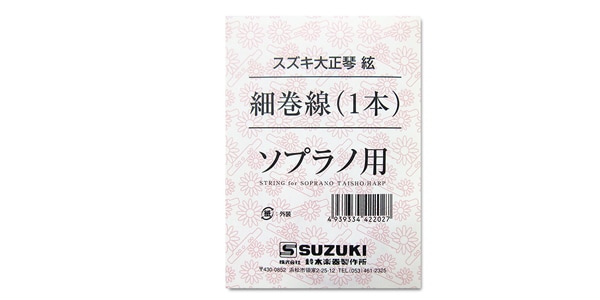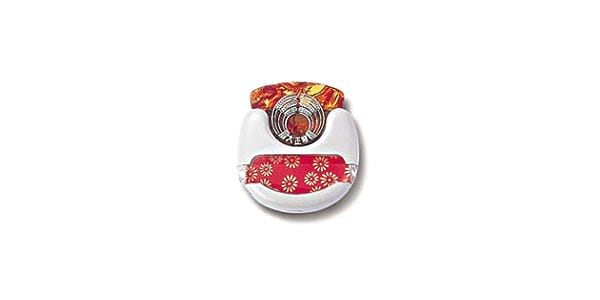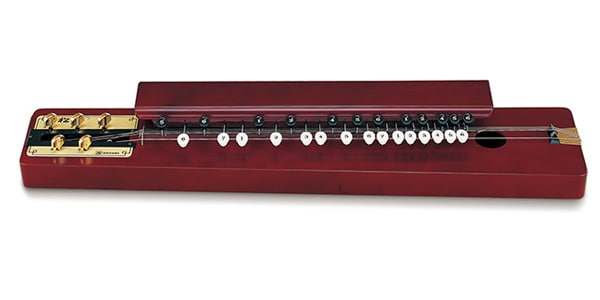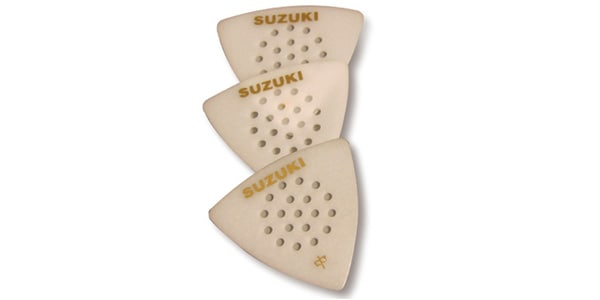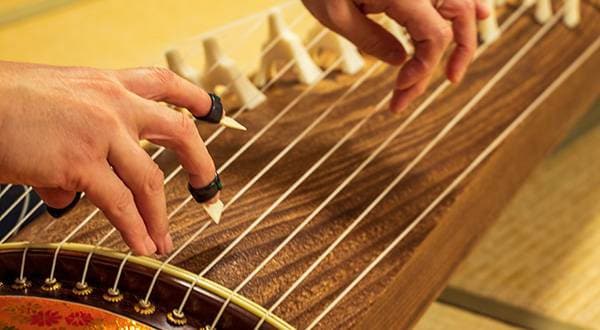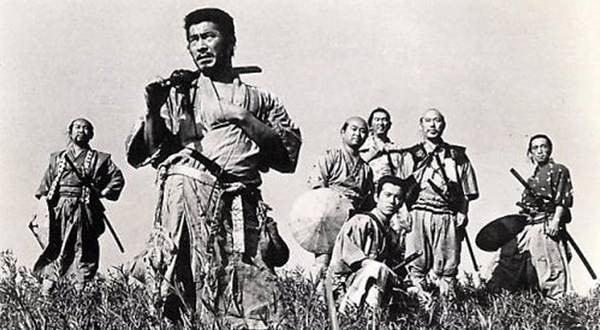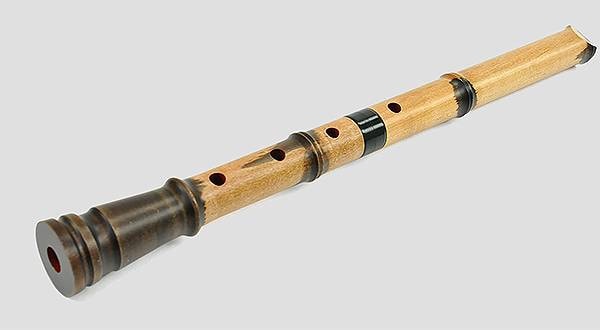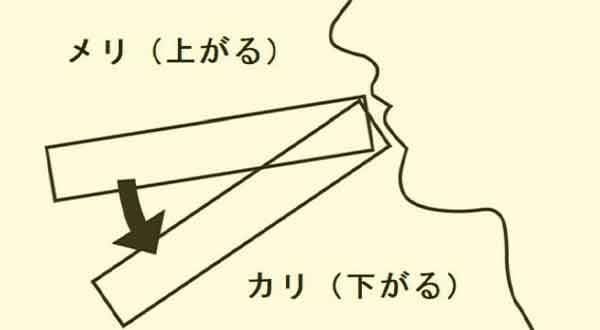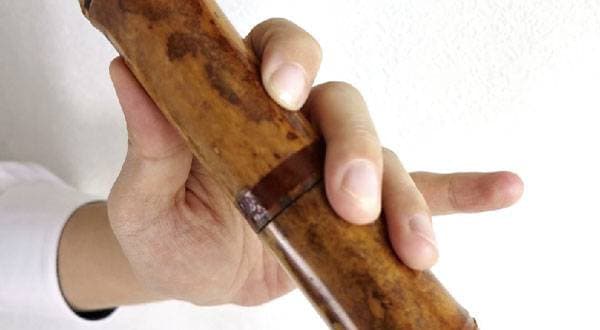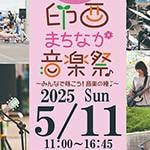Hello. I went home for the first time in a year during New Year’s.
This time, I will introduce a Japanese musical instrument I discovered when I returned to my parents' home.
I seem to remember my late grandfather playing some kind of instrument in the past ... I asked my family if we still had the instrument at home.
After some searching, I found it in the back of the storage room.
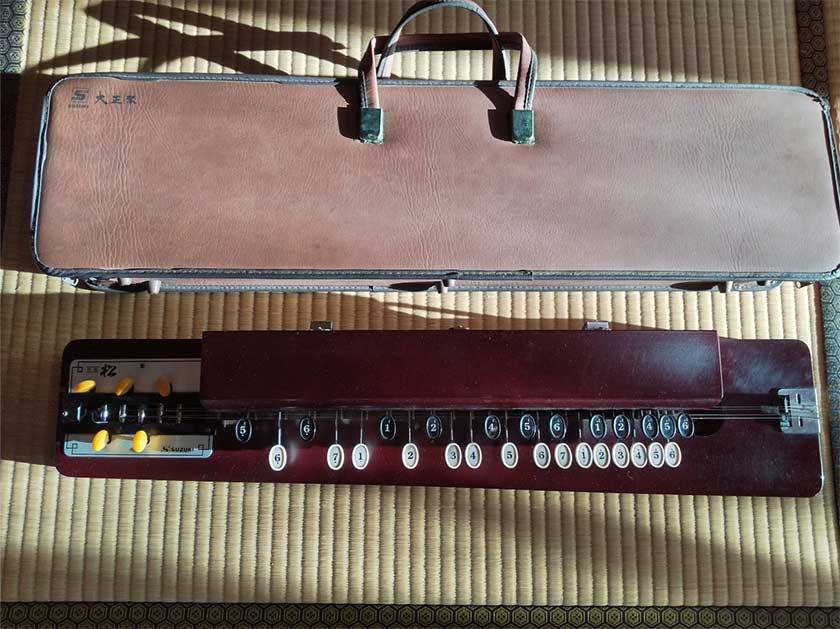
This instrument is called a Taisho-goto (大正琴). Have you heard of this instrument?
It is broadly categorized as a stringed instrument like a koto (琴).
However, the ordinary koto that you probably know is actually a musical instrument called a “So” (箏).
I learned how to play the “So” in music class when I was in junior high. You may also have played the "So".
The Taisho-goto, however, has a structure that combines a guitar with a piano.
The main identifying feature of the Taisho-goto is that it has scale buttons.
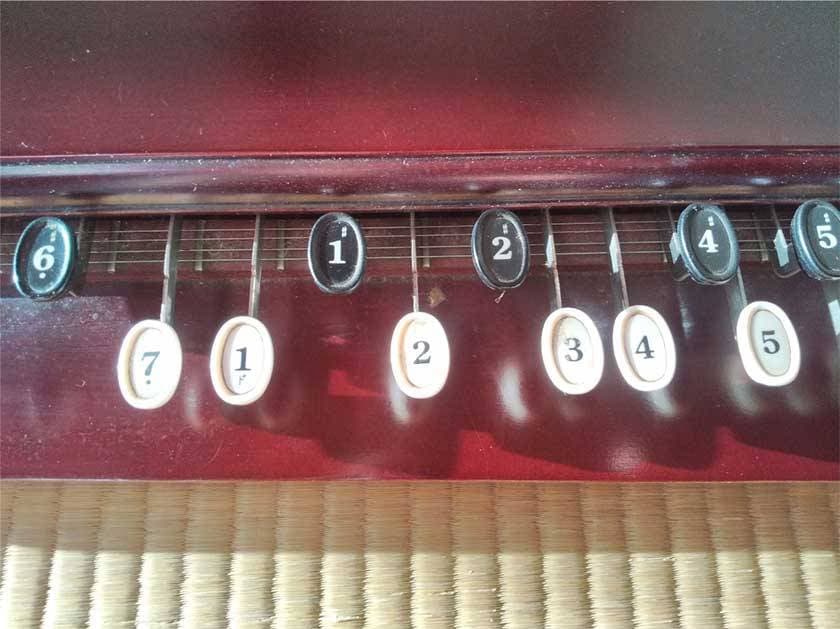
To put it simply, hold down a scale button with your left hand and pick the string with your right hand, and that note will be emitted. The arrangement of the scale buttons is the same as the piano.
But to get the sound you want, you need to tune the instrument like a guitar, bass, or mandolin.
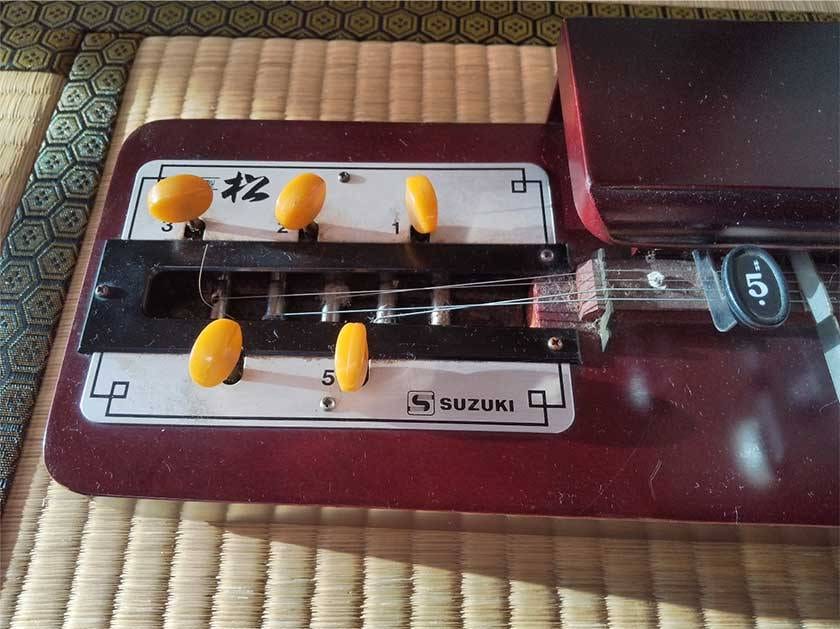
The Taisho-goto has a string winder (called “genmaki”) just like other stringed instruments. (For some reason, it isn’t called a peg.)
You turn the string winder to adjust the string tension and tune the instrument. The tuning method is the same as other instruments, but the characteristic point is that they all match the sound of "G".
The five strings are numbered as 1st to 5th from back to front. The 1st to 3rd strings are all tuned to the same "G" sound, while the 4th string is tuned to "G" one octave lower, and the 5th string is tuned to "G" one octave lower.
Then there is the other end.
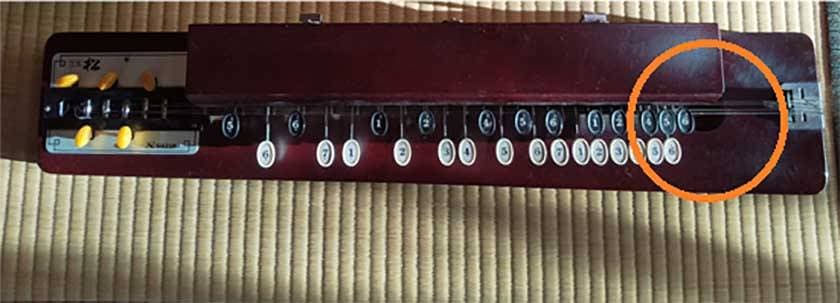
There is a sound hole like a guitar (circled in orange) in the photo, and you pick the strings above the sound hole.
I didn't have a tuner or a piano for the “G”, so while picking the strings, I tuned it by ear to “G” singing "G~ G~ ♩". LOL
I was impressed by the sound of Taisho-goto, which had probably been asleep for close to 20 years. Right after that, the string broke.
This was not surprising, considering the state of the strings which hadn’t been played for the last 20 years, I am not a stringed player, so I was surprised for the first time that a string broke while I was playing it myself.
The case contained a few unused strings, so I replaced them.
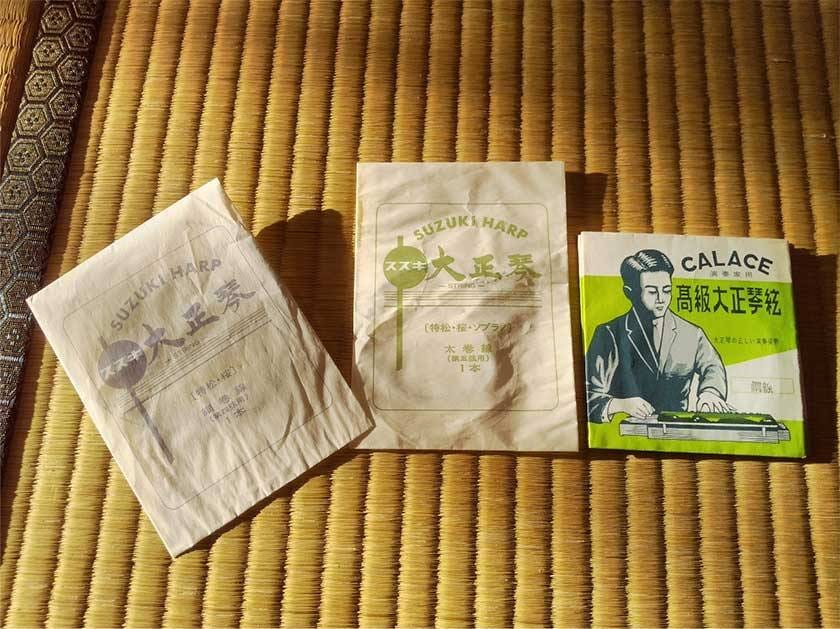
The strings are looped on one side and you just hook these on the tabs circled in blue in the photo below.
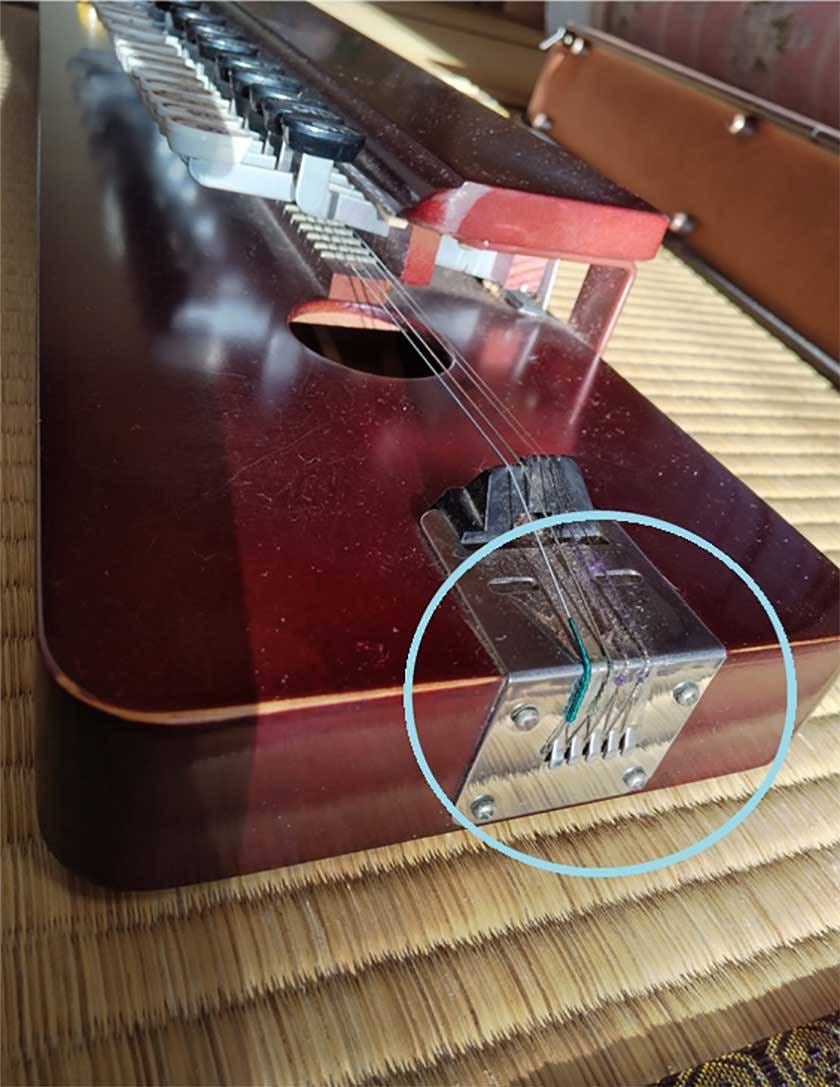
On the other end, there is a hole in the string winder shaft like the one on a guitar tuning peg shaft. You pass the string through the hole, and wind it in the same way you would wind a guitar string.
I have changed the strings of a guitar once in the past, and I tried stringing this in the same way I remember having stringed the guitar. Sit was surprisingly easy!
I replaced only the 5th string that had broken, and used the other strings as they were. After finishing tuning to the sound of "G", I picked the string while pressing the "C" button, and the sound of "C" sounded! I was impressed!
When I tried playing A to G, I was able to play it as I would a piano.
I was wondering if there were any songs that are suitable for playing on the Taisho-goto …… Then I discovered the score below included in the back of the manual.
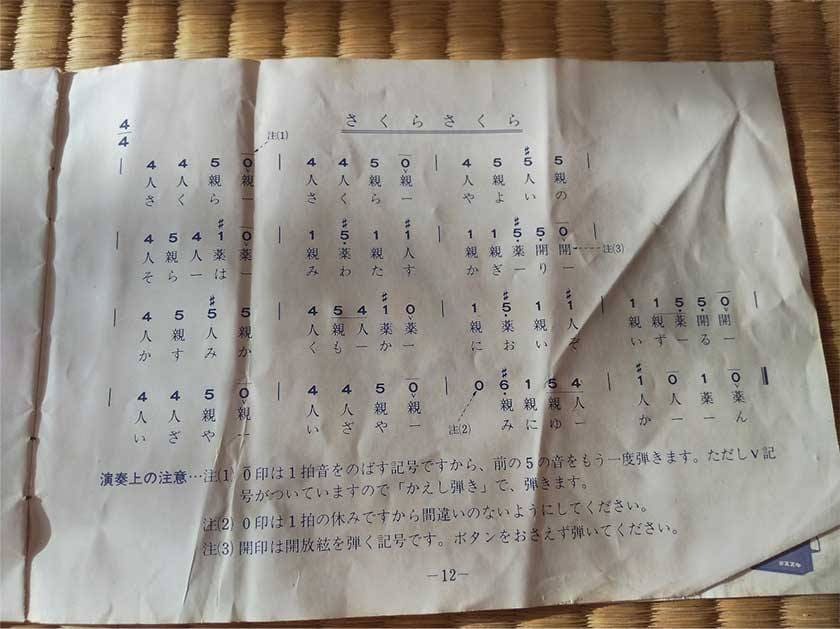
Please pardon the wrinkles. . .
The music score for the Taisho Koto has a “numerical notations" for the numbers on the scale buttons, as well as a notation for which finger presses the button. This makes it easy to play for even those who can't read staff notation. So thoughtful! I was able to play with just a little practice!
Also, I taught my father, who had never played an instrument, how to read music. After practicing several times together, he was able to play “Sakura Sakura”.
I played the instrument without really concerning myself with how to play the instrument. It seems that there are various ways to play, including picking on the backstroke, as well as adding tremolo, and vibrato. But the hurdle is low for players starting a new instrument.
The photos were taken on tatami mats, but the instrument was actually played on kotatsu. Lol Considering that, don't you think it's the kind of instrument that you could easily start playing?
The Taisho-goto is said to have been invented because Western pianos and violins were expensive. True, it has the structure of both Western stringed instruments and pianos. It is also small and easy to carry around.
Currently, there are various types of Taisho-goto at Sound House, including stylish models and electric Taisho-goto that can be connected to an amplifier.
This time, I introduced the Taisho Koto, which most people usually have very little chance to touch. I would be happy if you are even a little interested in checking it out.
Maybe there are some interesting instruments lying asleep in your homes. Please see if you can find one!





